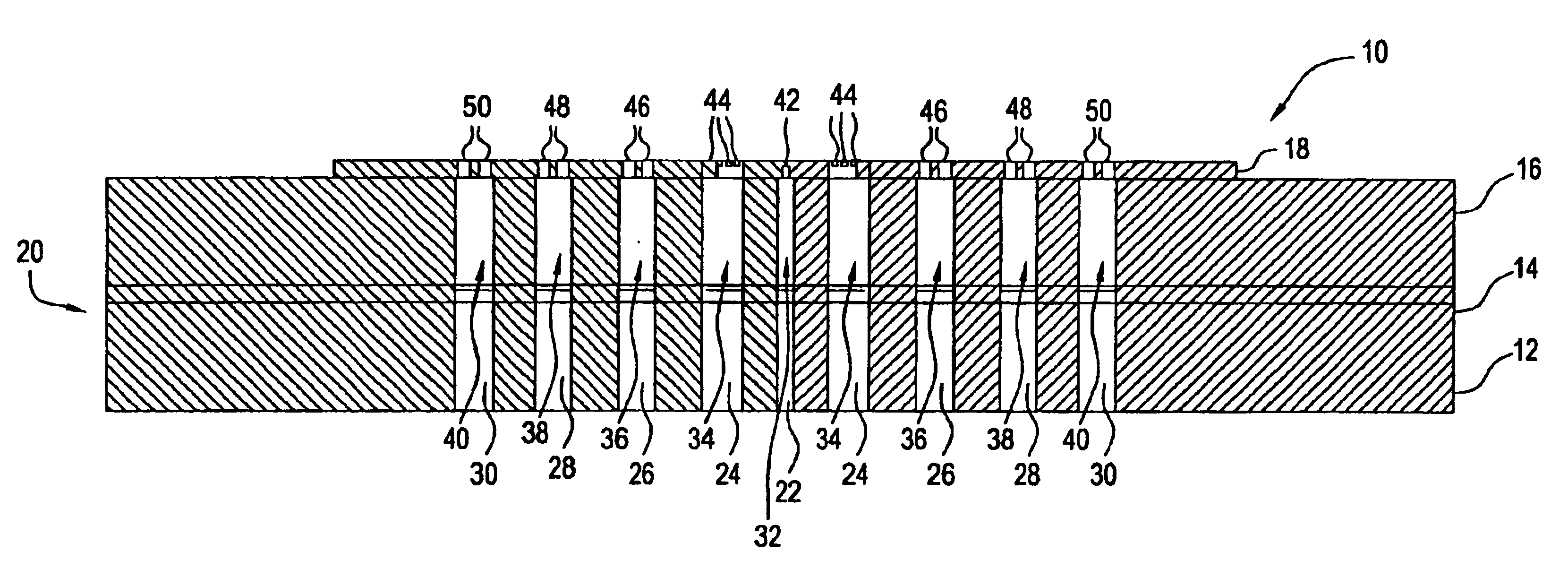Method of producing oxide soot using a burner with a planar burner face
a burner and burner face technology, applied in the field of burners, can solve the problems of reducing the soot deposition rate, defective or unusable optical waveguides, and imperfections in the preform, and achieve the effects of less soot waste, accurate and efficient deposition of metallic oxide soot, and high back pressur
- Summary
- Abstract
- Description
- Claims
- Application Information
AI Technical Summary
Benefits of technology
Problems solved by technology
Method used
Image
Examples
Embodiment Construction
An exemplary embodiment of the burner of the present invention is shown in FIG. 1 and FIG. 1A and is designated generally by reference numeral 10. The burner 10 is a burner for producing a flame from a combustible gas in which a precursor undergoes a chemical reaction to form an inorganic soot, preferably a metallic oxide soot. In an exemplary, preferred embodiment of the present invention the burner is used to produce doped or undoped silica soot by reacting a silicon-containing precursor in the flame produced by the burner 10.
The burner 10 comprises a plurality of substantially planar layers arranged in a generally parallel and fixed relationship. Each layer is preferably at least about 100 microns to about 1 millimeter thick, and the length and width of each layer will depend on the particular application for which the burner is used. For example, burners used for the production of silica soot for waveguide fiber preform may be approximately 1 centimeter wide and one centimeter l...
PUM
| Property | Measurement | Unit |
|---|---|---|
| diameters | aaaaa | aaaaa |
| diameters | aaaaa | aaaaa |
| temperature | aaaaa | aaaaa |
Abstract
Description
Claims
Application Information
 Login to View More
Login to View More - R&D
- Intellectual Property
- Life Sciences
- Materials
- Tech Scout
- Unparalleled Data Quality
- Higher Quality Content
- 60% Fewer Hallucinations
Browse by: Latest US Patents, China's latest patents, Technical Efficacy Thesaurus, Application Domain, Technology Topic, Popular Technical Reports.
© 2025 PatSnap. All rights reserved.Legal|Privacy policy|Modern Slavery Act Transparency Statement|Sitemap|About US| Contact US: help@patsnap.com



